Are you tired of your woodworking projects ending up wonky and uneven? Have the frustrations of achieving a straight and true cut left you feeling like throwing in the towel? Well, fear not, because this blog post is going to unveil the secrets to mastering the art of using a circular saw to achieve precision cuts every single time. Say goodbye to wavering lines and say hello to perfectly straight cuts that will leave you in awe of your own woodworking prowess. Whether you’re a beginner looking to up your game or a seasoned DIYer wanting to refine your skills, this is the ultimate guide for you. So, grab your circular saw, put on your safety goggles, and delve into the basics of cutting straight with this powerful tool.
What is a Circular Saw?
A circular saw, a robust and adaptable tool commonly employed in woodworking, offers a multitude of possibilities for craftsmen. With its ability to swiftly execute precise and straight cuts, it proves invaluable in working with an extensive range of materials, including plywood, lumber, and sheet metal. Powered by a high-performance electric motor, this tool features a razor-sharp steel cutting blade that rotates at remarkable speeds. The circular saw’s blade exhibits an assortment of sizes and tooth configurations, meticulously tailored to suit various applications, further enhancing its versatility and efficiency.
Whether it’s constructing a table or building a deck, mastering the circular saw is fundamental to the success of any woodworking project. With a few basic tips and tricks, you can become an expert in no time! Start by familiarizing yourself with the different parts of your saw to ensure optimal operation. Then, select the right blade for your specific task and ensure that it’s securely attached before turning on the motor. Lastly, practice proper safety precautions such as wearing protective eyewear, gloves, and hearing protection.
With these simple steps in hand, you’ll be ready to take on just about any project! Get out there and start sawing with confidence! With a little practice, you can soon become an expert at working with the circular saw [1].
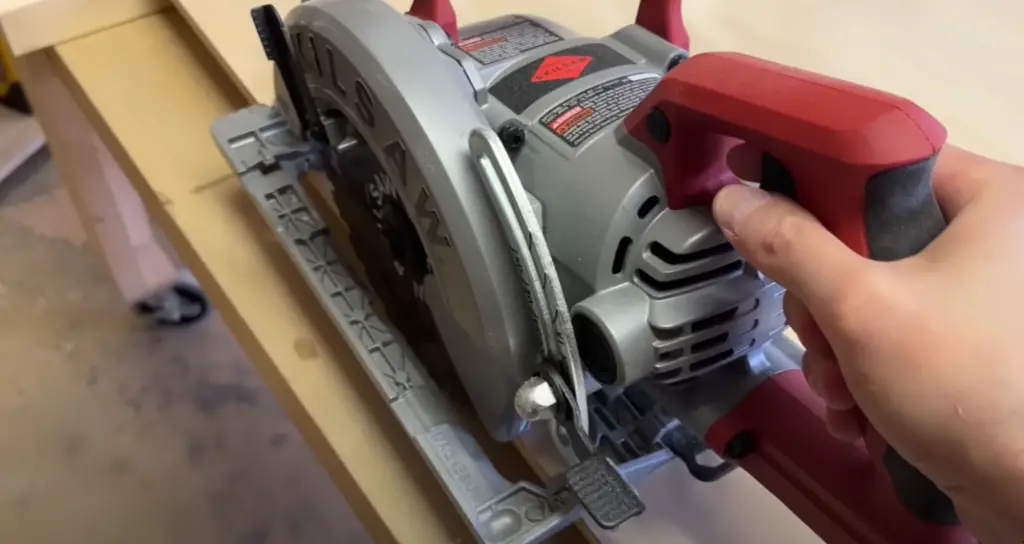
Types of Cuts You Can Make With a Circular Saw
Cross Cut
A crosscut, which is the most common type of saw cut, involves cutting across the grain of the wood. To make a cross-cut, you can adjust your saw blade to 90 degrees for a straight line or up to 45 degrees for an angled cut, allowing for greater versatility in your woodworking projects. This cutting technique is particularly useful for framing lumber, trim, doorjambs, and other general construction tasks, making it an essential skill for any DIY enthusiast or professional carpenter. With its ability to create precise and accurate cuts, the crosscut is a fundamental technique that enhances the quality and craftsmanship of your woodworking projects.
Rip Cut
A rip cut is used to cut along the grain of a piece of wood. This type of sawing technique is ideal for cutting down boards into narrower pieces, such as when you’re making table legs or stair treads. To make a rip cut, your circular saw blade must be adjusted to 0 degrees or parallel with the direction in which the wood grain runs. Doing so allows for a smoother, straighter cut and allows you to achieve greater accuracy in your projects.
Chamfer Cut
A chamfer cut is used to create angled edges on the end of pieces of wood or along the edge of boards. This type of sawing technique is great for adding decorative touches to furniture such as table legs and shelves. This technique requires you to adjust your saw blade at an angle from 45 degrees to 90 degrees, depending on the desired effect. To create a beveled edge on board, you will need to adjust your blade between 0 and 45 degrees. With some practice and experience, chamfer cutting can add unique detail and distinction to any woodworking project.
Compound Cut
A compound cut is a combination of two sawing techniques – rip cutting and crosscutting – used to create angled cuts in wood. This type of cut requires you to adjust your saw blade at an angle, usually between 0 and 45 degrees. Compound cuts are often used for making miter joints, trimming door jambs, or creating intricate designs in furniture. With the right technique and practice, you can create complex angles and shapes with your circular saw for aesthetic or practical purposes.
Miter Cut
A miter cut involves trimming the edges of a board at an angle to give it a frame-like appearance. This type of cutting is often used to make picture frames, crown molding, and door jambs. To make a miter cut, your saw blade must be adjusted to 45 degrees or any angle between 0 and 90 degrees (depending on the desired effect). With a steady hand and practice, you can create beautiful frames and intricate details with this classic sawing technique.
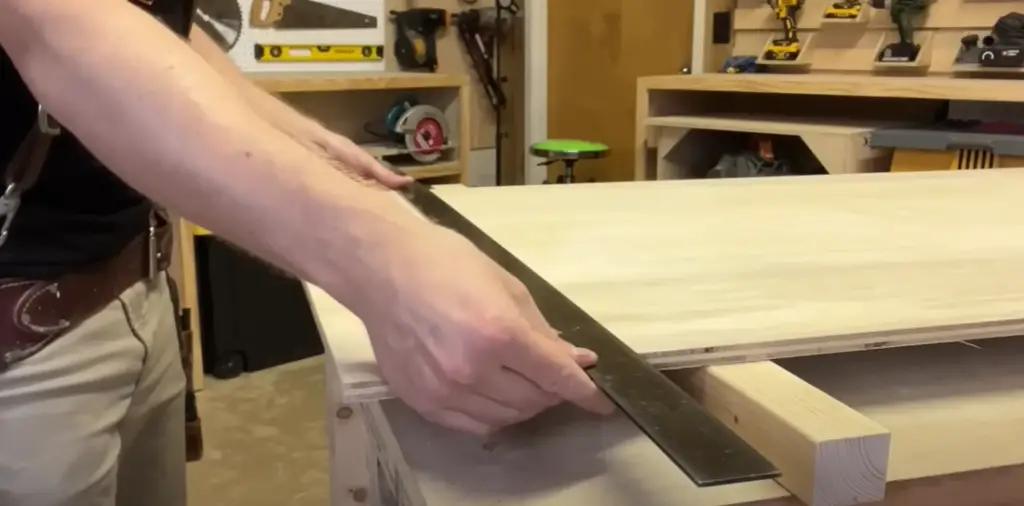
Groove Cut
A groove cut is used to cut a rectangular or square channel into a piece of wood. This type of sawing technique is great for creating slots and dadoes, such as when making bookcases or cabinets. To make a groove cut, you will need to adjust your saw blade at an angle between 0 degrees and 45 degrees. With practice, you can create intricate designs and details with this versatile sawing technique.
Bevel Cut
A bevel cut is used to cut the edge of a board at an angle, creating a beveled edge on one side. This type of sawing technique is ideal for giving edges and corners a smooth finish, such as when making furniture or trimming door jambs. To make this type of cut, you will need to adjust your saw blade between 0 and 45 degrees, depending on the desired effect. With practice, you can create unique details and angles with your circular saw for beautiful results [2].
Ways to Make Straight Cuts with a Circular Saw
Speed Square
A speed square is a must-have tool for anyone looking to make straight cuts with a circular saw. This right-angle, triangular-shaped tool helps you quickly and accurately mark the edge of a wood piece where you want to make your cut. It also helps guide the saw blade along that line and keep it at ninety degrees for clean, precise results.
DIY Circular Saw Cutting Guide
If you don’t have a speed square handy, you can make your own cutting guide with materials from the hardware store. All you need is two pieces of wood or plywood that are straight and free of warps and knots. Secure them together at right angles using screws or clamps and use that as your makeshift cutting guide. Once in place, run the circular saw blade along the edge of the guide and you’ll get perfectly straight results.
Kreg Rip-Cut
The Kreg Rip-Cut is a highly useful circular saw accessory designed to make your cutting tasks even easier and more precise. This innovative guide seamlessly attaches to your circular saw, enabling you to effortlessly create straight and accurate cuts of up to 24 inches wide in a single pass. With its adjustable markers, you can conveniently customize the width of your cut to suit your specific needs. Moreover, the Rip-Cut boasts an ergonomic handle that ensures both comfort and safety during operation, making it an indispensable tool for any woodworking enthusiast or professional. Experience the convenience and precision of the Kreg Rip-Cut and take your cutting projects to the next level!
Kreg Accu-Cut
If you’re looking to take your precision to the next level, the Kreg Accu-Cut is the perfect solution. This remarkable circular saw accessory operates on a precisely engineered track, ensuring that your saw remains flawlessly aligned with every cut line. With the Accu-Cut, you can achieve impeccable results consistently.
Moreover, the Accu-Cut boasts an adjustable stop feature, allowing you to effortlessly make repeatable cuts without the need for time-consuming measurements. This convenient addition enhances efficiency and streamlines your woodworking projects. Invest in the Kreg Accu-Cut to elevate your cutting game and experience unparalleled accuracy and ease in your woodworking endeavors [3].
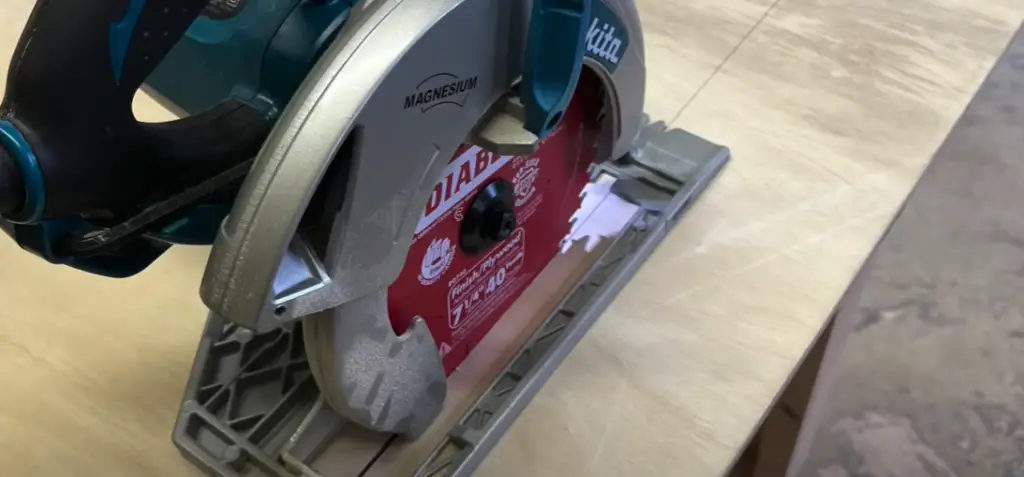
Tips for Cutting Straight with a Circular Saw
When building furniture, decks, and other projects with a circular saw, it’s important to be able to make straight cuts. Here are some tips that will help you become a master of the craft:
- Make sure your saw is properly secured and stable before making any cuts. If you’re using a support system like clamps or sawhorses, make sure the saw is firmly rested before you begin.
- Make sure your saw blade is sharp and free of debris or rust. Dull blades will make it difficult to make a precise cut.
- Take your time when making the cut – don’t rush! Begin at the end of the board that needs to be cut and slowly make your way across.
- If possible, use a guide rail or straight edge to ensure a straight cut. This is especially helpful if you’re making cuts in long boards that have a tendency to bow or warp over time.
- Always wear safety glasses and other protective equipment when using a circular saw, as it can kick back debris at high speeds.
- If you’re making a particularly long cut, it may be helpful to make several shorter cuts instead of one continuous cut. This can help keep the board from warping or bowing over time.
- When using a jigsaw, it’s important to use the correct blade for the material that you’re cutting. Different materials require different blades, and using the wrong type can lead to uneven or rough cuts.
- Start your cut with a shallow depth before increasing the blade depth – this will help ensure a more accurate cut.
- When making curved cuts, use clamps at both ends of the board to keep it in place as you make your cuts.
- Finally, practice makes perfect! The more you use your circular saw, the better your cuts will become. With enough practice, you’ll be able to make precise and accurate cuts with ease.
These tips will help you become a master of cutting straight with your circular saw. Remember to take safety precautions and stay vigilant while operating power tools, and you’ll be sure to make perfect cuts every time.
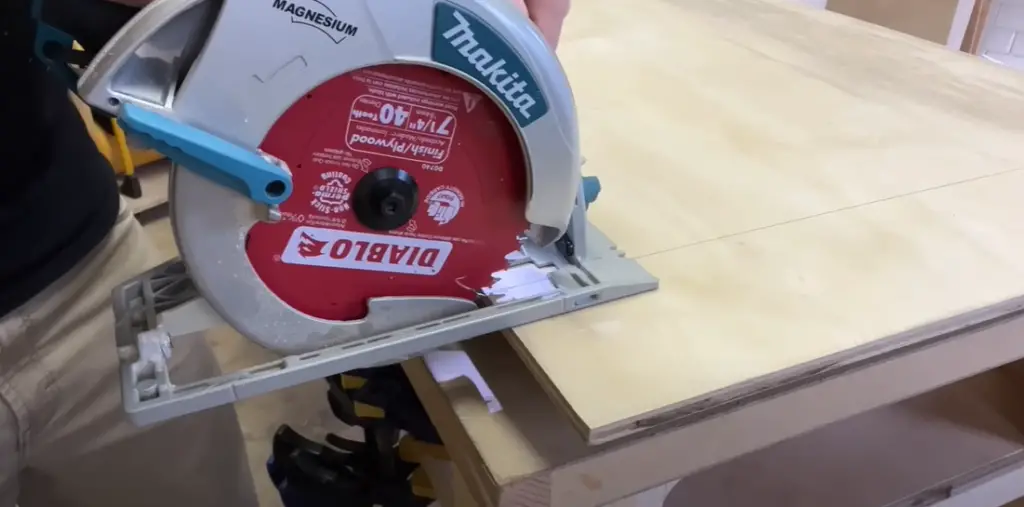
Cleaning and Maintaining Your Circular Saw
In addition to cutting straight, it’s important to keep your circular saw clean and well-maintained to ensure its longevity. Here are some tips on how to keep yours in great shape:
- After every use, make sure to wipe down your saw with a clean cloth and remove any dust or debris. This will help keep the blades sharp and prevent rust from forming over time.
- If there’s any oil or grease on the saw, use an old toothbrush to get into all the nooks and crannies.
- Make sure to sharpen the blades regularly to ensure clean, precise cuts.
- Check for any loose hardware or screws and tighten them if necessary.
- Don’t forget to inspect the cord for any signs of wear or fraying – replace it immediately if it’s in bad shape.
- Finally, store your saw in a dry and secure place when not in use.
By following these simple steps, you’ll be sure to get the most out of your circular saw for many years to come. With proper care and maintenance, it’ll stay in perfect condition for all of your future projects!
FAQ
Why is my circular saw not cutting straight?
A circular saw is a powerful tool, but it requires a steady hand and good technique to get the most out of it. If your saw isn’t cutting straight, there are several possible causes.
First, check that your saw blade is sharp and properly aligned with the saw body. A dull or misaligned blade can cause uneven cuts. Also, make sure the saw is firmly secured to the work surface. If it’s loose or has an uneven bottom, this can cause wobbling and inaccurate cuts.
If these issues don’t seem to be the problem, try adjusting the depth of the cut. A deeper cut can cause more vibration, resulting in a less-than-perfect finish. Finally, make sure you’re using your saw properly. Keep the blade flat against the material and move it in a steady, even motion. With patience and practice, you can get your circular saw to make perfect cuts every time!
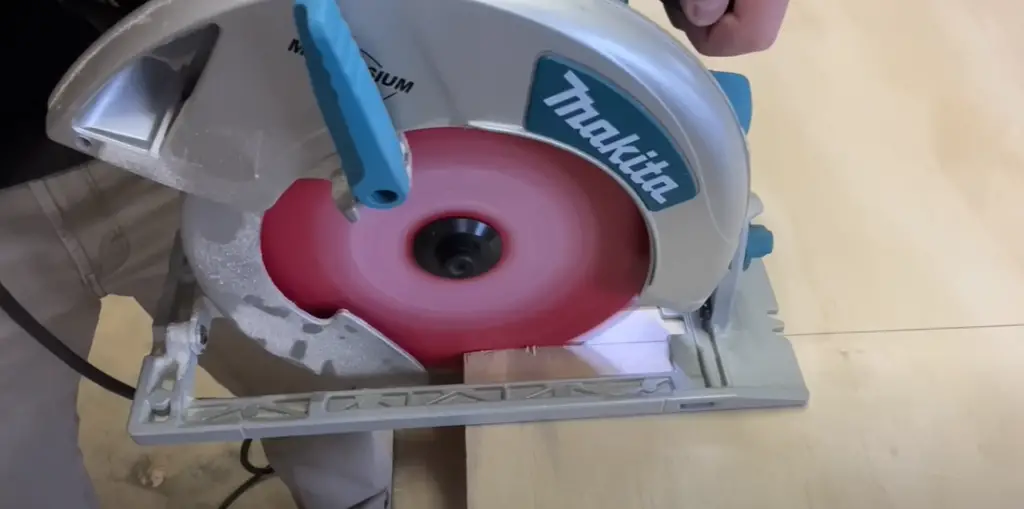
What is the best way to cut metal with a circular saw?
Cutting metal with a circular saw requires extra care and caution. It’s important to use the right blade for the material you’re cutting. For metal, a carbide-tipped blade is recommended. Make sure your saw’s speed setting is suitable for the material and blade type.
When cutting, work slowly and steadily, allowing the saw to do most of the work. If possible, clamp the piece down firmly so it won’t move. Use a straight edge or other guide to ensure the cut is even and accurate. Finally, keep your hands away from the saw blade at all times for safety purposes.With these tips in mind, you can use your circular saw to safely and accurately cut metal!
What is the best way to store my circular saw?
Proper storage of your circular saw is crucial for keeping it in good condition. First, ensure the blade guard is fully engaged when not in use to prevent accidents. Then, unplug the saw and wipe off any dust and debris.
Next, store the saw on a shelf or in a toolbox away from moisture and direct sunlight. If you’re storing the saw for a long period, make sure other tools don’t press against the blade as this can dull or damage it. Finally, keep your blades sharp and aligned with the saw body so they’re ready to go when you need them. Following these tips will help ensure your circular saw is always in top shape!
How do you cut more accurately with a circular saw?
Accurate cuts with a circular saw require practice and patience. To start, make sure the blade is sharp and correctly aligned with the saw body. This will ensure you get clean, even cuts each time.
Also, use a straight edge or other guide as a reference point for making accurate cuts. Experiment with different cutting depths to find the right one for the material. Finally, keep the blade flat against the workpiece and move it in a steady, even motion. With time and practice, you’ll be able to make perfect cuts with your circular saw!
What safety precautions should I take when using a circular saw?
Safety should always come first when operating a circular saw. Before starting, make sure the saw blade is sharp and clean, and that it’s properly aligned with the saw body. Always wear protective gear like gloves, safety glasses, and a dust mask when using the saw.
Be sure to keep your hands away from the blade while in use. Unplug the saw when not in use, and engage the blade guard fully if you need to take a break. Finally, create a clear work area and make sure the saw is firmly secured to the workpiece before starting. Following these safety tips will help keep you safe while using your circular saw!
How do I change the blade on my circular saw?
Changing the blade on your circular saw is fairly simple once you get the hang of it. First, unplug the saw and make sure the blade has stopped spinning. Then, loosen the bolt securing the blade to the saw body using a wrench or hex key. Carefully remove the old blade, making sure not to touch any of its sharp edges.
Next, position your new blade with its teeth pointing down and away from you, then secure it in place with the bolt. Make sure the blade is tightly secured before plugging the saw back in and testing it. With patience and practice, changing your circular saw blades will become second nature!
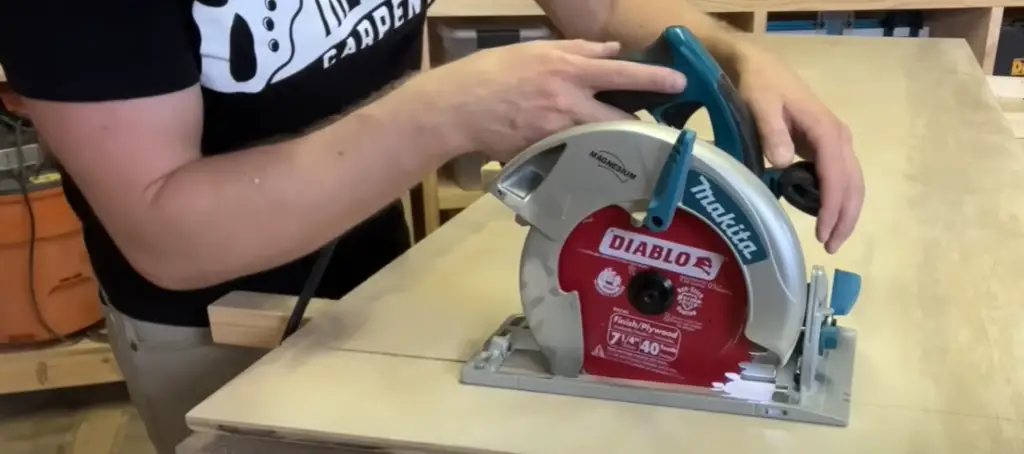
What materials can I cut with a circular saw?
A circular saw can be used to make cuts through a variety of materials including wood, metal, plastic, and more. It’s important to use the correct blade for each material. For woodworking projects, a carbide-tipped blade is usually best. For metal, you’ll need a special metal-cutting blade.
Make sure the saw is set to the right speed setting for the material and blade type you’re using. Finally, keep the saw blade flat against the material while cutting and work slowly and steadily. With these tips in mind, you can use your circular saw to make precise cuts through many materials!
What is a plunge cut?
A plunge cut is a technique used with a circular saw where you start the cut before the blade touches the material. This type of cut is useful for cutting out a hole in the middle of a piece of material, such as for electrical outlets or sink drains. To make a plunge cut, place your saw so its blade is slightly above the workpiece and press down to start the cut. Then lower the saw further until it’s completely through the material. Make sure you hold onto the saw firmly at all times for safety. With patience and practice, you’ll be able to master the plunge cut!
Useful Video: How To CUT STRAIGHT With NO GUIDE! Freehand CIRCULAR SAW CUTTING…Pro Tips, Tricks and Secrets!
What is a miter cut?
A miter cut is a type of angled cut typically used in woodworking projects. To make this cut, your circular saw must be equipped with a miter saw attachment. First, set the angle you want to cut at on the attachment. Then, slowly and evenly guide the saw through the material while keeping it flat against its surface. With practice, you’ll be able to make perfect miter cuts every time!
Conclusion Paragraph
To cut straight with circular saws, you need to be comfortable with the saw itself and practice using it. The right circular saw can make a big difference in your accuracy and quality of cuts, so choose carefully. Be sure to read up on the safety instructions for operating a circular saw and always wear protective gear when working with one. With these tips and tricks, you’ll soon become a master at cutting with your circular saw!
References:
- https://kitchencabinetkings.com/glossary/circular-saw/
- https://sawsonskates.com/make-straight-cuts-with-a-circular-saw/
- https://sawsonskates.com/make-straight-cuts-with-a-circular-saw/















Leave a Reply